If you live in the U.S. and decide to keep ducks, you have a large variety to choose from.
Ducks are a terrific addition to parks, lakes, forests, and other natural habitats. Farmers and homesteaders with open land also love having them around because they are nice to look at and help reduce local bug populations.
To most people, having ducks is worth the trouble of raising ducklings, cleaning up poop, and the related chores necessary to keep them healthy and happy. In return, you get low-maintenance birds that add color and personality to any area.
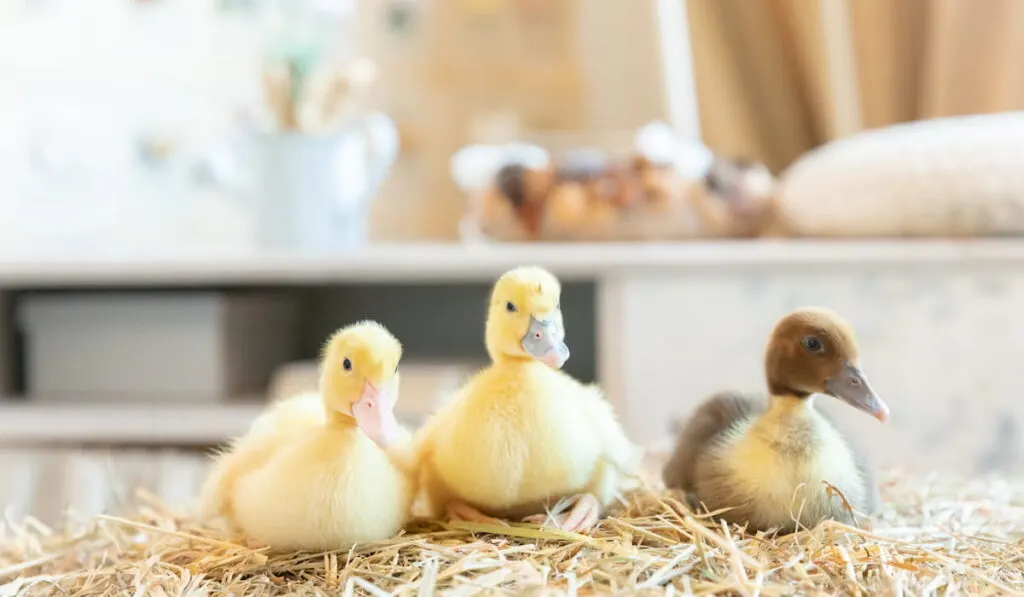
Knowing what type of ducks you have can be challenging when they are very young because most ducklings look the same.
However, understanding what kind of duckling you either have or want is essential to caring for them long-term.
Here are some types of ducklings you’ll find available in North America and some interesting facts about them.
Table of Contents
Dabbling vs. Diving Ducks
When you learn about ducks, you realize that they come in various shapes, sizes, and colors. One thing that separates them most is whether they are diving ducks or dabbling ducks.
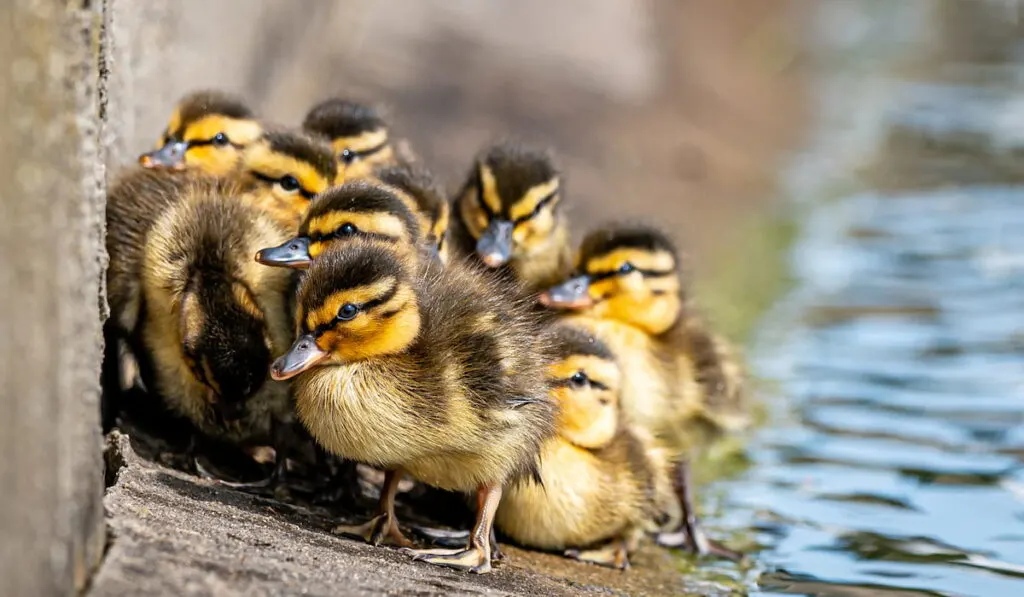
Dabbling Ducks
Dabbling ducks spend most of their time in shallow water, grazing on sea grass and small bugs on the surface.
They don’t dive into deep water and spend a good deal of time out of the water on river or pond banks.
Dabblers will also eat the food you give them and scrounge around the grass for insects, seeds, and other tasty treats.
Diving Ducks
Diving ducks are typically better swimmers capable of diving several feet to catch fish or gather vegetation that sits on the floor of a lake or pond.
They have smaller wings that make it easier for them to dive. However, small wings make it harder for them to fly, which is why diving ducks usually need more runway to start flying compared to dabbling ducks.
11 Types of Ducklings
Pekin Ducklings
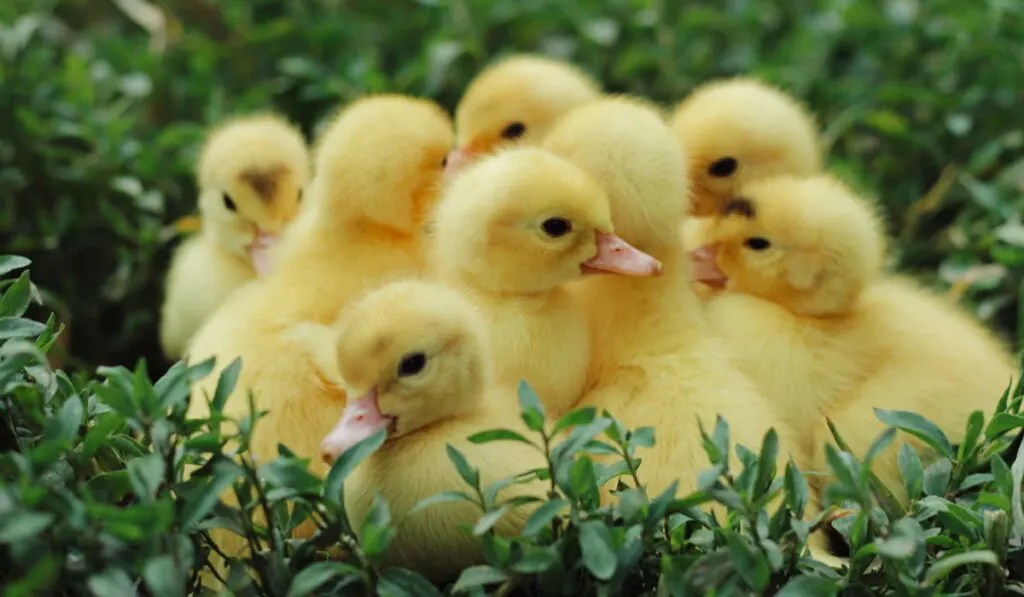
Pekin ducks are the most common breed in the United States. Farmers use them for duck meat production, and they’re also great to have on the homestead.
Pekins are large ducks with white feathers and yellow beaks, but their ducklings look quite different. When they’re young, Pekins have yellow fuzz all over their bodies until their feathers start to grow.
A Pekin duckling is the quintessential duckling you see in movies and cartoons.
Pekin ducks are generally docile creatures. They don’t fly, so they won’t get far when they are adults. Many people end up keeping them as pets alongside chickens and other birds.
Saxony Ducklings
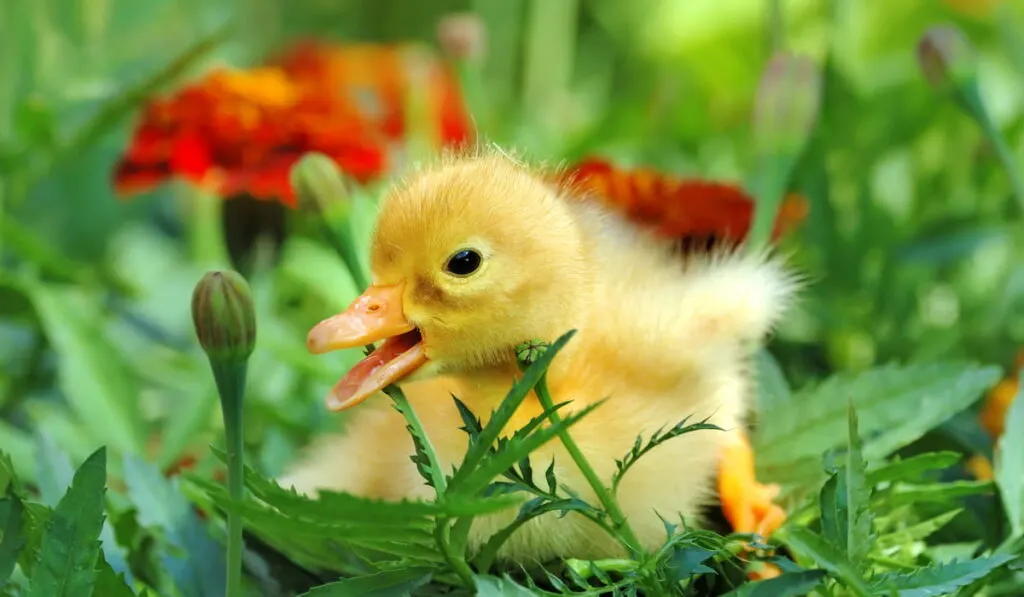
Saxony ducklings look a lot like Pekin ducklings, but their yellow fuzz usually has a bit of brown. When they mature, more brown and white feathers brown to give them a mixture of natural colors.
Saxony ducks are larger birds, and an adult Saxony will weigh around 8 pounds.
Mallard Ducklings
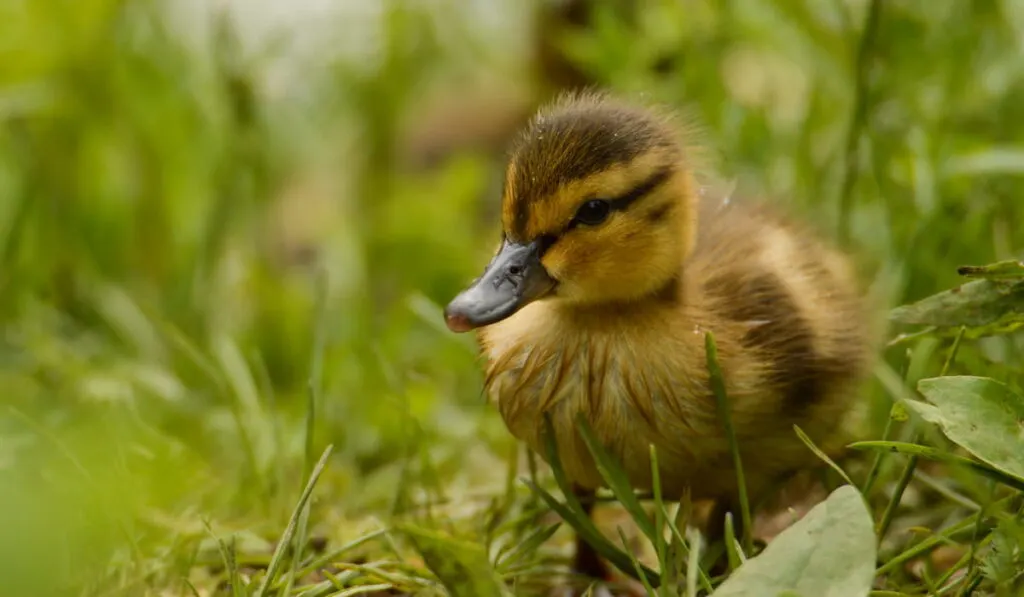
Mallard ducks are believed to be the ancestor of all domestic U.S. ducks.
Mallards are a popular duck breed because people love the stunning beauty of the male’s green crown and bright white collar underneath.
Mallard ducklings look more like their brown-patterned mothers. They have brown and tan fuzz until they start to fledge. This usually takes around two months.
Mallards are medium-sized dabbling ducks, so they prefer to stay in shallow water or on the shore where they can catch bugs and eat grass.
American Wigeon Ducklings
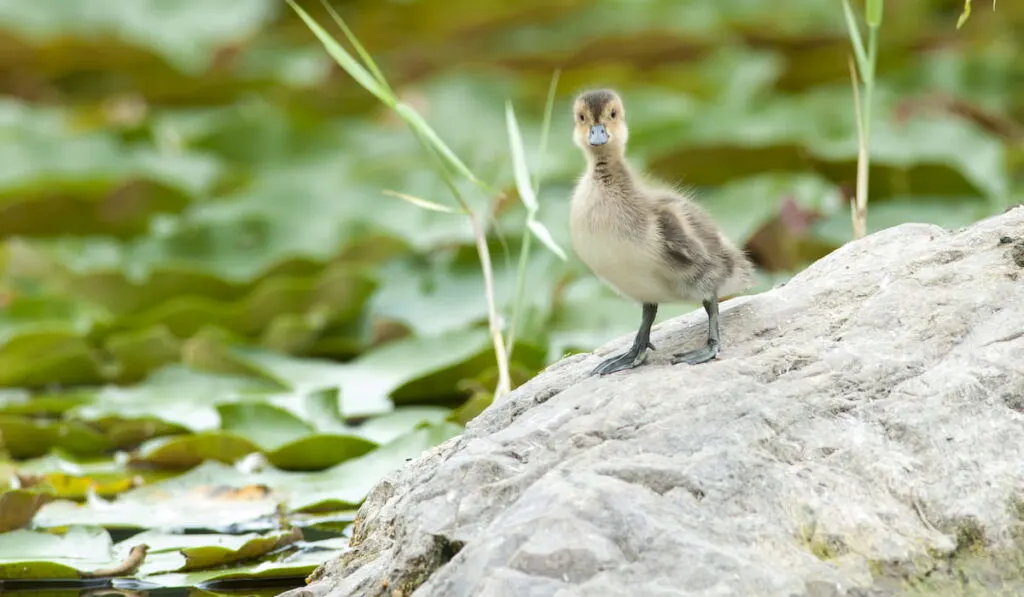
An American wigeon duck is a smaller bird with a distinct black tip on its beak. The males generally have green feathers around their eyes and crown, while female American wigeons have speckled brown and white heads.
These ducks aren’t always ideal to have as pets, and they typically shy away from humans. They love to eat plants, though, so they’ll even venture into fields to get enough food.
American wigeon ducklings are gray, brown, and gold. Their fuzz is in patches, and the colors fade into each other compared to the prominent stripes and patterning you see in mallard ducklings.
Northern Pintail Ducklings
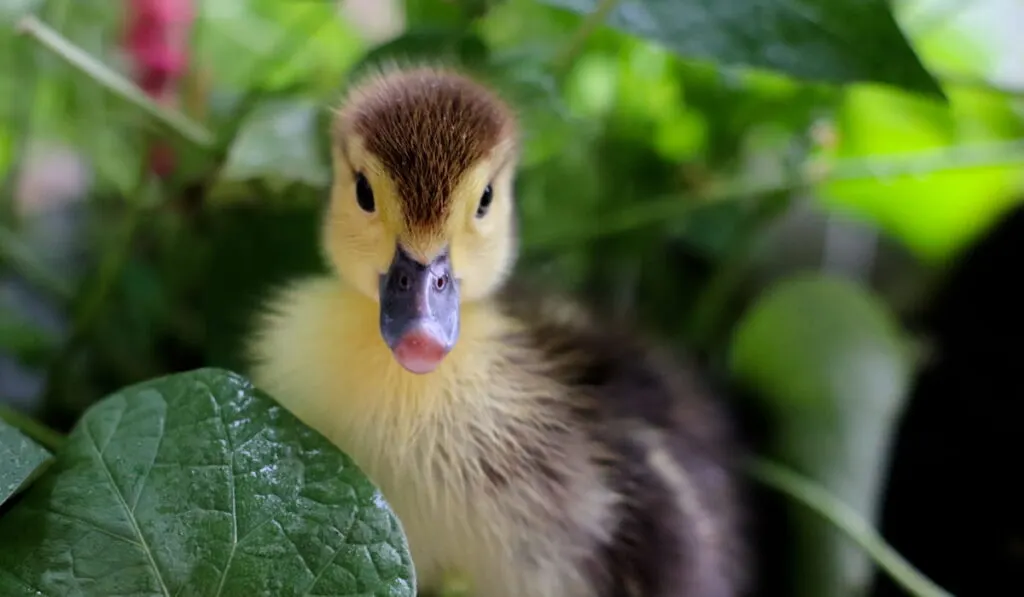
Northern pintails can be found across North America. You can spot them by their long, pointed tails and slender necks.
Males typically have white necks and brown heads and gray body feathers. Females are brown and tan, so it’s easy to confuse them with other breeds.
These birds thrive in wetlands and love shallow waters. They’re also good walkers, so you’ll sometimes see them on farm fields across the country.
Northern pintail ducklings look a lot like mallard ducklings before their feathers start to grow.
Rouen Ducklings
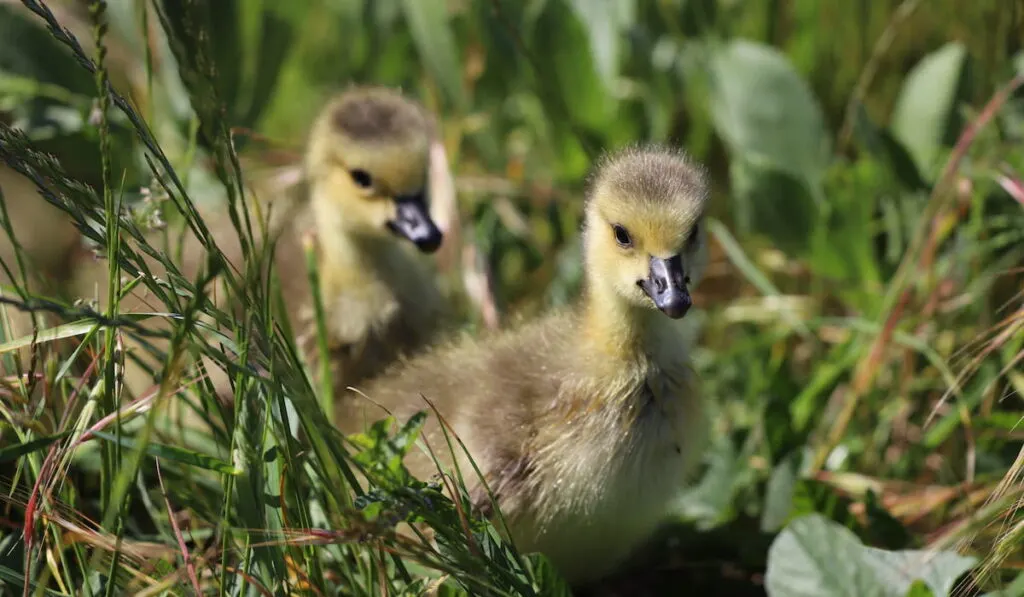
Rouen ducklings look exactly like mallard ducklings. You’ll see the gold and brown pattern and dark brown or black stripes across their heads.
However, Rouens grow much larger than adult mallards. They are a calm breed, making them a good pet choice.
As adults, Rouens don’t lay as many eggs as Pekins or mallards, so they’re not often used for breeding.
Wood Ducklings
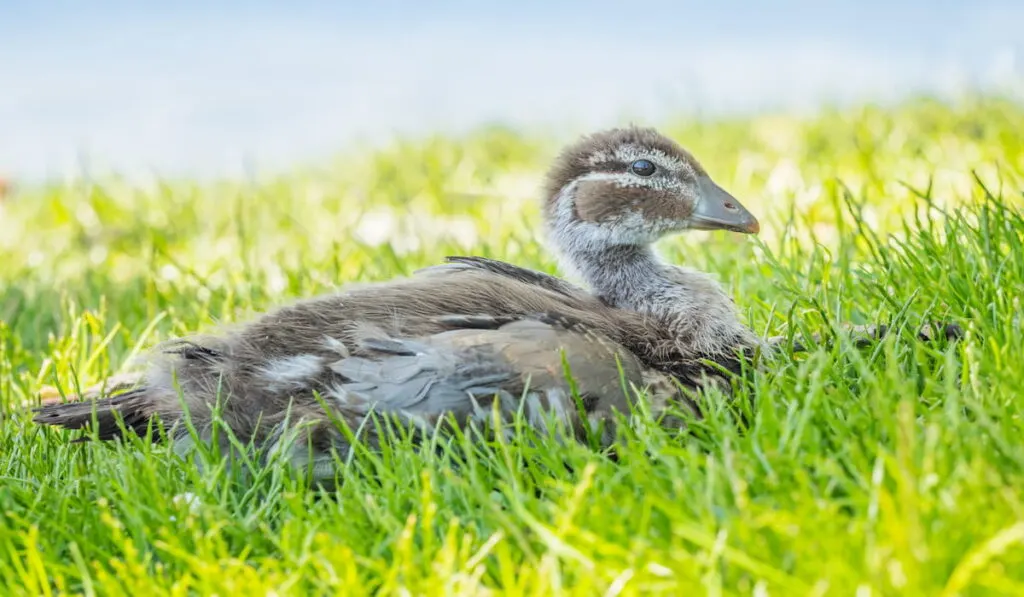
Wood ducks look like they came straight out of a fantasy novel. These birds are impossible to miss.
Adult males are a mixture of beautiful bright colors and narrow beaks. The female ducks also have a unique white teardrop over their eyes and blueish wings.
The ducklings aren’t as vibrant, and it’s easy to confuse them with mallards and other breeds.
These ducks are unique in that they have sharp claws at the end of their webbed feet that make it easier for them to climb. You’ll often see wood ducks nest in trees and branches around water bodies.
Gadwall Ducklings
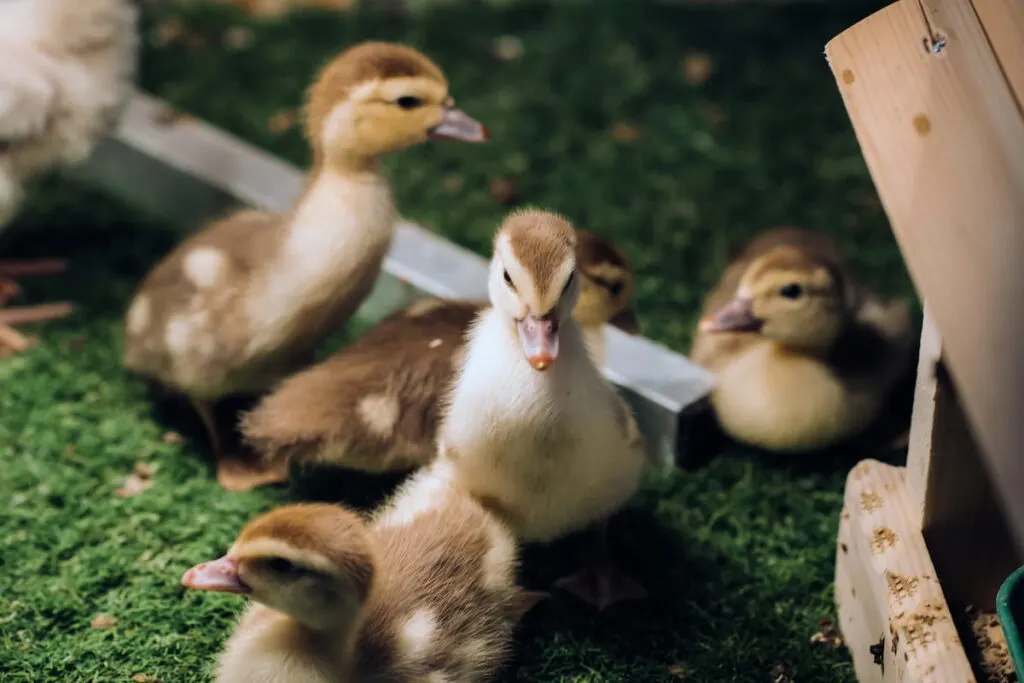
Gadwall ducklings look very similar to mallard or Rouen ducklings: a lot of brown fuzz.
Even when they grow into mature adults, gadwalls don’t have many distinct features that make them stand out.
Gadwalls have mostly gray and brown feathers that keep them hidden in weeds and tall grass.
They have patches of white on their wings, but the color is only visible when they are flying with their wings extended.
Northern Shoveler Ducklings
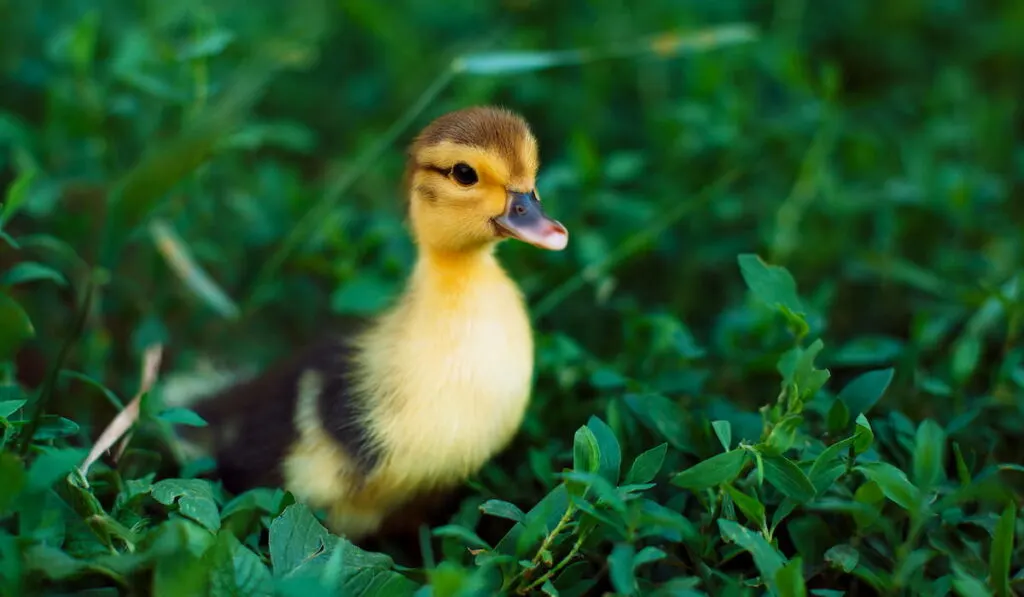
Once again, northern shoveler ducklings look very similar to mallard ducklings. You may be able to spot a difference by looking at their beaks.
Northern shoveler ducks grow into adults with larger beaks than most other breeds, which help them dig for vegetation and insects. Otherwise, it’s easy to confuse these ducks with mallards.
Fully-grown northern shovelers only weigh a couple of pounds, so they are much smaller than some of the other larger birds on this list.
Green-Winged Teal Ducklings
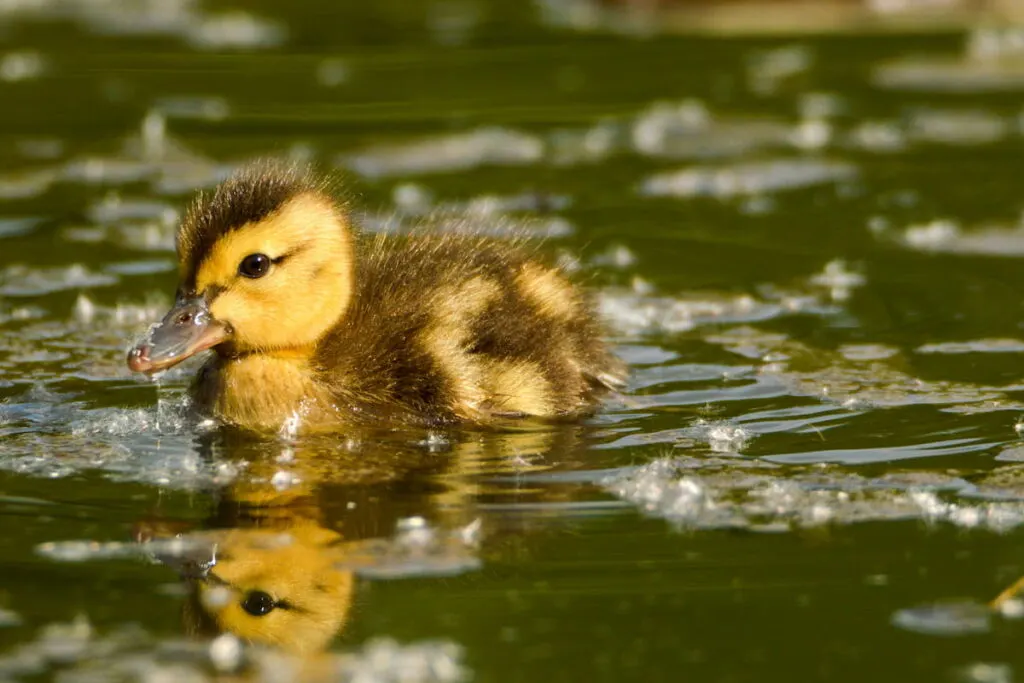
Green-winged teals look beautiful when they’re adult birds. The ducklings, though, look exactly like mallard ducklings.
A green-winged teal is a small duck: It is the smallest dabbling duck in the country. On average, the duck will weigh around 1 pound and measure around 1 foot long.
American Black Duck Ducklings
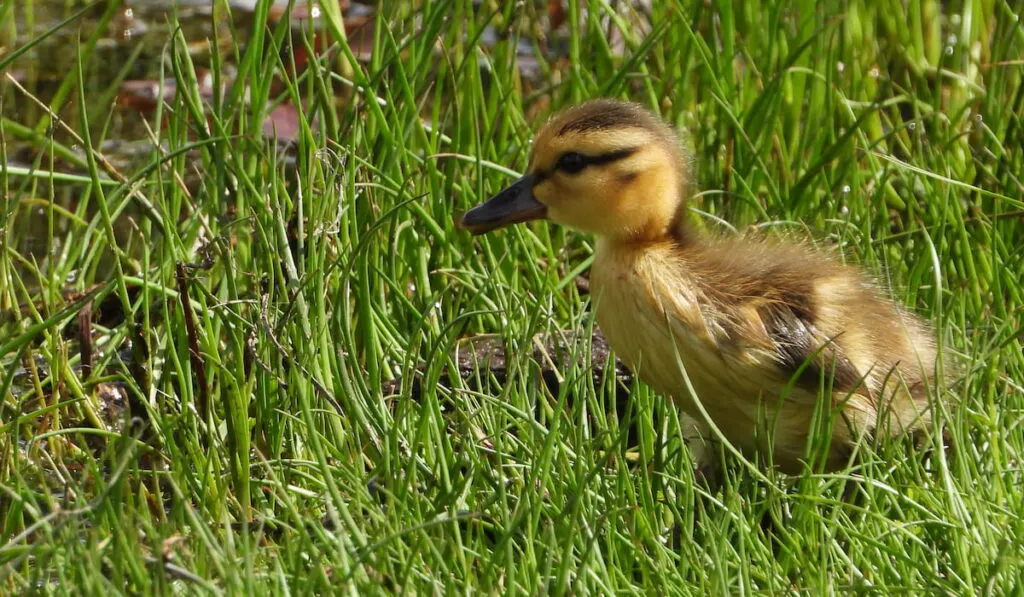
Both male and female American black ducks are dark brown with pale brown heads. Typically, males have a yellow beak, and female beaks are dark brown.
The name “black duck” is a bit strange because they don’t have much black on them at all.
Black duck ducklings are brown with yellow accents on their heads and wingtips. At a glance, they’ll look like most of the other ducklings on this list.
Final Thoughts: Differences in Breed Develop in Time
As you can see, it’s sometimes tough to tell what breed of duck you have when they’re small ducklings. Most of them look exactly the same or have minimal differences until their feathers grow.
You can determine the breed of a duckling by looking at the mother bird or asking whoever is selling or giving them to you.
We’ve listed eleven of the most common duck species in North America, but there are many other ducks you’ll find depending on where you live or are sourcing your ducklings.
